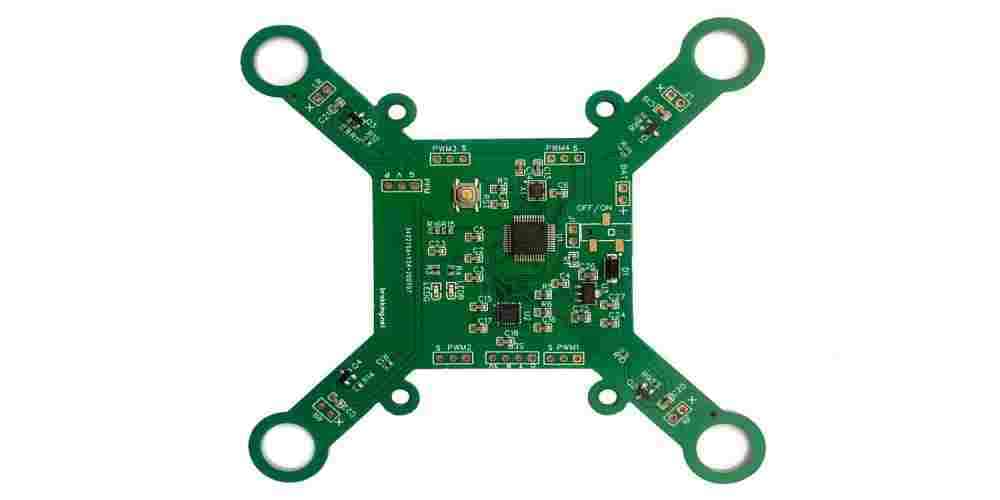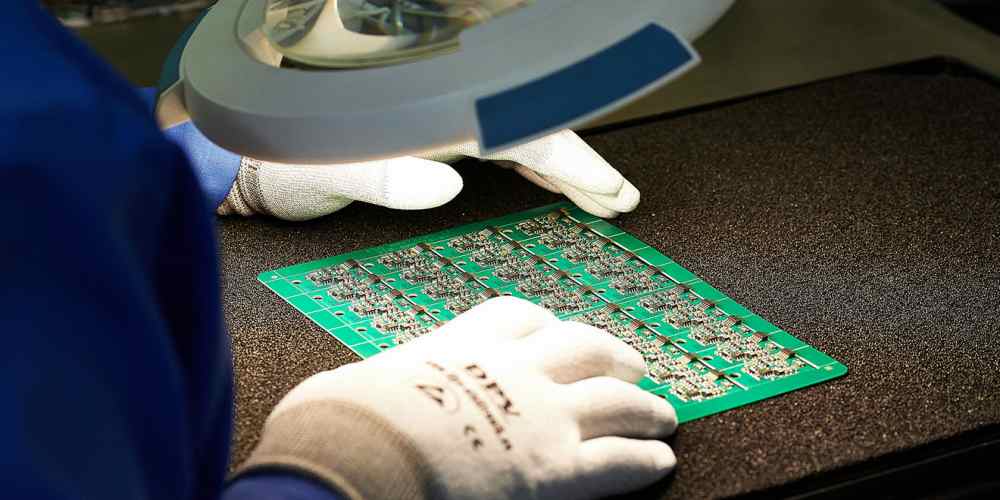Drones have taken the world by storm, with applications ranging from aerial photography to delivering packages. As the industry continues to expand, enthusiasts and professionals have started customizing their drones to fit their unique needs. One of the most important aspects of a custom drone is its core, also known as the drone board. Understanding the core of a custom drone board is essential for anyone looking to build or enhance their own unmanned aerial vehicle (UAV).
The core of a custom drone board is essentially the ‘brain’ of the drone. It controls the various functions and features of the UAV, such as stabilization, navigation, and communication. The core usually consists of a microcontroller or a microprocessor, as well as various sensors and electronic components that allow it to communicate with other drone systems and peripherals. When constructing a custom drone, selecting the right core is crucial, as it has a significant impact on the performance, capabilities, and overall user experience.
There are various types of cores available on the market, each designed for different applications and levels of complexity. Some popular options include open-source platforms like Arduino and Raspberry Pi, as well as more specialized solutions like the Pixhawk and Betaflight. Ultimately, the choice of core depends on the specific requirements of the drone project, such as desired flight performance, payload capacity, and operational range, among other factors.

Custom Drone Board Fundamentals
Components Of A Drone Board
A custom drone board typically consists of several essential components:
- Flight controller: This is the “brain” of the drone, responsible for processing data and controlling the motors. It receives input from various sensors and makes decisions based on pre-programmed algorithms.
- Sensors: Various sensors, such as accelerometers, gyroscopes, and GPS modules, are used to gather data on the drone’s position, orientation, and movement.
- Power distribution board (PDB): The PDB regulates the power supply to various components on the board, including the flight controller, sensors, and electronic speed controllers (ESCs).
- Electronic speed controllers (ESCs): These devices regulate the power supplied to the motors, controlling their speed and direction.
- Motors: The motors are responsible for generating the necessary thrust to lift and maneuver the drone.
- Communication modules: These components, such as radio receivers or telemetry systems, facilitate communication between the drone and a remote control or ground station.
Specifying A Custom Board Core
When designing a custom drone board, it’s essential to consider several factors to create an optimal core suited for your specific needs:
- Purpose: Determine the primary function of your drone, as this can influence the choice of components and their configurations. Examples include aerial photography, racing, or agricultural applications.
- Size and weight: Consider the size and weight limits of your drone, as these constrain the dimensions and mass of the board and its components.
- Power requirements: Calculate the power needs of your board by summing the consumption of all components to ensure that you select an appropriate power source and distribution system.
- Integration: Decide whether you want to use individual modules for each component or integrate them into a single, more compact PCB.
- Budget: Factor in your budget, as this can dictate the quality, complexity, and number of features incorporated into your custom drone board.
By carefully considering these factors and pursuing a purpose-driven design approach, you can formulate a custom drone board core that’s optimally suited for your specific application.
Custom Drone Board Design
Choosing Sensors
When designing a custom drone board, selecting the appropriate sensors is crucial for accurate and efficient operation. Some important factors to consider during the sensor selection process include:
- Type of sensor: Common drone sensors include accelerometers, gyroscopes, magnetometers, and GPS modules, which are essential for stabilizing and navigating drones.
- Sample rate: A higher sample rate allows for more real-time sensor data processing, which can improve drone performance.
- Size and weight: Compact and lightweight sensors help reduce the overall drone weight, allowing for longer flight times and greater maneuverability.
Selecting A Microcontroller
The microcontroller is the heart of a custom drone board, responsible for processing sensor data and controlling the drone’s movements. There are several factors to consider when choosing a microcontroller:
- Processing power: Choose a microcontroller with sufficient processing capabilities to handle the tasks required by the drone, such as sensor data processing, motor control, and communication with external devices.
- Memory: Adequate memory, both RAM and flash, is crucial for storing sensor data, control algorithms, and firmware updates.
- I/O capabilities: The microcontroller should have enough input/output (I/O) pins to interface with all necessary sensors and peripherals.
- Power consumption: Lower power consumption can extend battery life and flight time.
With careful consideration of these factors, a custom drone board can be designed to provide superior performance, efficiency, and functionality. The careful selection of sensors and microcontrollers will ensure the drone operates smoothly and effectively, making it easier to achieve the desired flight performance.
Software For Custom Drone Boards

Open-Source Flight Control Software
Open-source flight control software is a fantastic option for custom drone boards, as it enables users to take advantage of existing, community-driven software which can be customized for specific applications:
- ArduPilot: Trusted by many, ArduPilot is a reliable open-source flight control software that supports multi-copters, helicopters, fixed-wing aircraft, and other vehicles. It offers features like GPS waypoint navigation and obstacle avoidance.
- Betaflight: Popular among racing drone enthusiasts, Betaflight is an open-source flight control system that offers high-performance capabilities and is regularly updated by contributors.
Custom Software Development
For unique drone applications, it might be necessary to develop custom software for your drone board. This provides you with the freedom to include features specific to your project or target market. When creating custom software, consider:
- Identifying your software requirements: Clearly define the desired features and functions, considering aspects such as drone stability, flight modes, autonomous capabilities, and third-party integration.
- Setting up a development environment: Choose a programming language and a version control system, such as Git, to manage your codebase.
- Developing and testing: Implement your software incrementally, testing each component thoroughly to ensure optimal performance and stability. Keep your code and documentation up-to-date.
- Updating and maintenance: Regular software updates will be necessary to fix bugs, add new features and maintain compatibility with other hardware and software components.
Leveraging open-source flight control software or going for custom software development depends on the requirements and complexity of your custom drone board project.
Power System Considerations
Battery Selection
When designing a custom drone board, selecting the appropriate battery is crucial. The battery determines flight time and overall performance. Key factors to consider include:
- Capacity (mAh): The higher the capacity, the longer the flight time.
- Voltage (V): Affects the motor power, with higher voltage providing more power.
- Discharge rate (C): Determines how fast the battery can deliver power.
| Battery Type | Capacity (mAh) | Voltage (V) | Continuous Discharge Rate (C) |
|---|---|---|---|
| LiPo | 1500 – 6000 | 3.7 – 22.2 | 15 – 60 |
| Li-Ion | 2000 – 8400 | 3.6 – 14.8 | 1 – 10 |
Remember that battery weight can impact flight time, so choose a battery with an optimal balance of capacity, voltage, and discharge rate.
Power Distribution
Efficient power distribution is vital for the drone board’s performance. Consider the following approaches:
-
Power Distribution Board (PDB): Connects the battery to the motors and other electronics, distributing power throughout the system.
-
Electronic Speed Controller (ESC): Controls the drone’s motor speed and integrates with the flight controller. Opt for an ESC with a built-in PDB to simplify installation.
-
Integrated Flight Controllers: Some flight controllers feature built-in PDB and ESC, saving space and weight on the drone.
When selecting components, consider compatibility issues, reliability, and available space on your drone. Aim to create an organized and compact power distribution system for optimal performance.
Communication And Control Systems
Radio Frequency Communication
Radio frequency (RF) communication is the primary means for transmitting control signals between a drone and its remote controller. Common RF bands used for drone communication include the 2.4 GHz and 5.8 GHz frequencies, which offer a balance of range, signal strength, and reliability. Here are some popular RF protocols used in custom drone boards:
- DSMX
- FrSky
- FlySky
- Crossfire
Each protocol has its own set of advantages and drawbacks, such as range, latency, and compatibility with other components.
Telemetry Transmission
Telemetry data, such as GPS coordinates, altitude, battery status, and flight statistics, are vital for both monitoring a drone’s performance and ensuring its safe operation. Telemetry transmission is typically achieved through radio frequency links or digital data links, depending on the drone’s specifications and the pilot’s requirements. Some common telemetry protocols include:
- MAVLink
- NMEA
- LTM
MAVLink is widely used in custom drone boards due to its versatility and compatibility with various ground control software. NMEA is a standard data format used with GPS receivers, while LTM is lightweight and suitable for smaller drones with limited resources.
Transmitter-receiver pairs for both control and telemetry links must be chosen based on factors like range, data rate, and transmission power. In some cases, the communication system may be integrated with the drone board or connected through specialized modules.
When designing a custom drone board, it’s important to consider the appropriate communication and control systems, keeping in mind the intended application, budget, and preferred RF bands and protocols. Ensuring a reliable and robust connection between the drone and remote controller is crucial to safety and performance.
Challenges And Limitations

Hardware Compatibility Issues
Custom drone boards often face hardware compatibility issues, as they require the integration of various components such as motors, controllers, sensors, and GPS modules. This can lead to:
- Mismatched communication protocols
- Insufficient power supplies
- Unsupported sensor configurations
It is crucial to research and select components that are compatible with each other to ensure smooth operation.
Regulatory Compliance
Another challenge when building a custom drone board is adhering to regulatory compliance. Different countries have different regulations regarding drone usage. Some common regulatory aspects include:
- Maximum altitude
- Line of sight requirements
- No-fly zones
Staying informed about local regulations helps in designing a drone board that meets these requirements, ensuring legal and safe operation.
Conclusion
In summary, custom drone boards provide tailored solutions to the specific requirements of each drone user. These boards offer advantages such as increased efficiency, customization options, and increased control over the drone’s functionality.
Several factors contribute to the core of a custom drone board:
-
Processor type: The choice of a suitable processor is crucial to balancing the drone’s performance and power efficiency. Picking the right one will grant smoother operation and longer flight times.
-
Integration of components: Custom boards allow for streamlined and optimized integration of the drone’s essential systems such as GPS, cameras, and various sensors.
-
Custom firmware: Custom firmware ensures that the drone board’s software is optimized for the specific hardware components in the drone, enhancing its performance and overall reliability.
-
Expandability: A custom board can be designed with additional ports and connectors to enable further customization and use of peripherals, such as extra sensors or cameras, according to the user’s needs.
By addressing these crucial aspects, custom drone boards offer a competitive edge and tailored functionalities that meet various drone users’ unique demands. As drone technology continues to grow and expand, custom drone boards will undoubtedly play a significant role in pushing the drone industry boundaries.

